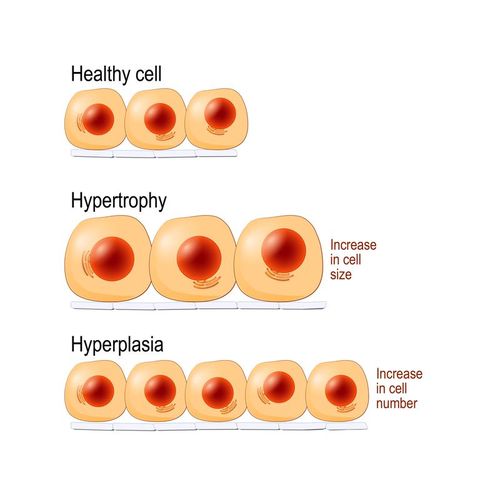
Created: 18-10-2022 at 02:05 AM || Last update: 23-06-2023 14:06 PM
Muscular Hypertrophy in Your Workout
Hypertrophy is an increase and growth of muscle cells. Hypertrophy refers to an increase in muscular size achieved through exercise. When you work out, if you want to tone or improve muscle definition, lifting weights is the most common way to increase hypertrophy.
There are two types of muscular hypertrophy:
- myofibrillar: growth of muscle contraction parts
- sarcoplasmic: increased muscle glycogen storage
Which type to focus on depends on your fitness goals. Myofibrillar training will help with strength and speed. Sarcoplasmic growth helps give your body more sustained energy for endurance athletic events.
When weightlifting, you can perform many repetitions (reps) at a lower weight or lift a heavy weight for fewer reps. The way you lift will determine the way your muscles grow and change.
For example, you can develop muscle tone with a lighter weight, but it will require a high number of repetitions to improve efficiency of muscle fibers. Unless you perform a number of repetitions to the point of fatigue, with this workout style you won’t see a lot of muscle definition.
On the other hand, using a heavy weight is an effective way to stimulate growth and definition in muscle fibers. It’s also a more efficient way to work out if you are short on time.
To build muscle through weight lifting, you need to have both mechanical damage and metabolic fatigue. When you lift a heavy weight, the contractile proteins in the muscles must generate force to overturn the resistance provided by the weight.
In turn, this can result in structural damage to the muscles. Mechanical damage to muscle proteins stimulates a repair response in the body. The damaged fibers in muscle proteins result in an increase in muscle size.
Mechanical fatigue occurs when the muscle fibers exhaust the available supply of ATP, an energy component that helps your muscles contract. They aren’t able to continue fueling muscular contractions or can no longer lift the weight properly. This can also lead to muscle gain.
Both mechanical damage and metabolic fatigue are important for achieving muscular hypertrophy.
You don’t necessarily need to work your muscles to the point of what’s called “failure” — meaning you’re unable to follow through a repetition to get the results you want.
One study from 2010 found that for maximum gains, there needs to be significant metabolic stress on the muscles, plus a moderate degree of muscle tension.
Researchers found exercises that involve shortening (concentric) movements at fast-to-moderate speeds for 1-3 seconds and elongating (eccentric) at slower speeds (2-4 seconds) to be highly effective.
One example of a concentric movement is raising the weight during a bicep curl to your shoulder. The return the starting position would be eccentric.
How often you need to exercise to achieve muscular hypertrophy depends on your goals.
You could try one of these weight-lifting schedules:
- Lifting (especially heavy weights) three days a week. This allows you a day in-between sessions to let your muscles recover. Recovery is essential for muscle growth.
- Lifting just two days a week, depending on your current fitness level.
- Alternating between upper-body lifting and lower-body lifting on different days. This allows you to work different muscles while allowing time for rest and recovery.
www.healthline.com/health/muscular-hypertrophy